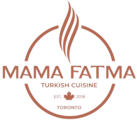Cooking frozen meat may seem challenging, but with the right techniques, you can achieve tender, flavorful results. Whether you’re in a rush or didn’t have time to thaw your meat, cooking from frozen is possible with a few adjustments. At Mama Fatma, with our locations in Mississauga, we focus on providing our guests with fresh, high-quality halal dishes that highlight the flavors of Turkish, Middle Eastern, and Mediterranean cuisine. However, when cooking at home, learning how to properly handle frozen meat is a valuable skill, ensuring great taste and texture.
In this guide, we’ll explore the best methods for thawing and cooking frozen meat, including seasoning and cooking time adjustments to ensure a perfectly cooked dish every time.
Blog Contents
ToggleThawing Techniques for Different Cuts of Meat
The first step to cooking frozen meat perfectly is knowing how to thaw it properly. Thawing meat slowly and evenly preserves its texture and flavor. Different cuts of meat require different thawing techniques, as they vary in thickness and fat content.
Safe Thawing Techniques:
- Refrigerator Thawing (Best Method):
- Time: 12-24 hours (depending on size)
- Best For: Large cuts like roasts, whole chickens, and steaks
- How: Place frozen meat on a plate and leave it in the fridge for up to 24 hours. This method is the safest as it keeps the meat at a constant cold temperature, preventing bacterial growth.
- Cold Water Thawing:
- Time: 1-3 hours
- Best For: Smaller cuts like chicken breasts, ground meat, or steaks
- How: Place the frozen meat in a sealed plastic bag and submerge it in cold water. Change the water every 30 minutes to ensure it stays cold. This method is faster than the fridge and still safe.
- Microwave Thawing:
- Time: 10-20 minutes
- Best For: Ground meat or thin cuts
- How: Use the defrost setting on your microwave. Be sure to check the meat frequently to avoid partially cooking it during the thawing process. Once thawed, cook the meat immediately to avoid bacteria growth.
Can You Cook Frozen Meat Directly Without Thawing?
Yes, you can cook frozen meat directly, but it requires adjusting cooking times and methods. We’ll explore these techniques in the following sections.
Cooking Methods: From Frozen vs. Thawed
When cooking frozen meat, the key difference from cooking thawed meat is the time it takes and the way heat distributes through the cut. Frozen meat takes about 50% longer to cook than thawed meat. The best cooking methods for frozen meat are those that allow for even, slow heat distribution.
Cooking Frozen Meat Directly:
- Oven Roasting:
- Best For: Large cuts like roasts, whole chickens, or lamb legs
- How: Preheat the oven to a lower temperature (around 325°F/165°C) to ensure the meat cooks evenly. Start roasting the meat and increase the temperature in the final stages to brown the exterior.
- Tip: Cover the meat with foil for the first half of cooking to retain moisture.
- Stovetop Searing and Oven Finishing:
- Best For: Steaks, chicken breasts, or pork chops
- How: Start by searing the frozen meat on high heat in a pan. This creates a crispy crust on the outside. Once seared, transfer the meat to the oven to finish cooking.
- Pressure Cooking or Instant Pot:
- Best For: Braised dishes, stews, or frozen chicken thighs
- How: A pressure cooker is perfect for cooking frozen meat because it uses steam and pressure to cook food faster while keeping it tender and juicy. Simply add your seasoning and liquid, and increase cooking time by 50%.
- Grilling Frozen Meat:
- Best For: Frozen hamburgers, steaks, or sausages
- How: Preheat the grill to a medium-low setting. Cook the frozen meat slowly to ensure even heat distribution. Flip frequently to prevent burning.
Cooking Thawed Meat:
When meat is properly thawed, it cooks more evenly and retains its natural moisture. You can use higher heat settings and cook for shorter periods, whether you’re roasting, grilling, or pan-frying.
At Mama Fatma, we always use fresh, thawed meat for our dishes like Veal Lokum, but these tips will help you manage cooking from frozen at home when you’re in a pinch.

Best Practices for Ensuring Even Cooking
One of the biggest challenges when cooking frozen meat is ensuring even cooking. Because the outside of the meat starts to cook before the inside has thawed, you need to take extra steps to prevent undercooked spots in the center.
Tips for Even Cooking:
- Use a Meat Thermometer: A meat thermometer is your best tool for checking doneness when cooking frozen meat. This ensures that the internal temperature reaches the correct level for safe consumption:
- Poultry: 165°F (74°C)
- Beef, Veal, Lamb (medium-rare): 145°F (63°C)
- Ground Meat: 160°F (71°C)
- Cook at Lower Temperatures: When cooking frozen meat, use a lower heat setting to allow the interior to cook evenly without overcooking the exterior. This is especially important for large cuts.
- Cover with Foil or a Lid: For oven or stovetop cooking, covering the meat with foil or a lid traps heat and steam, helping to cook the meat more evenly while keeping it moist.
- Use Liquid for Slow Cooking: When using a slow cooker or pressure cooker, add broth, water, or sauce to help the heat transfer more effectively throughout the frozen meat.
- Flip or Rotate Frequently: If grilling or pan-frying frozen meat, flipping it more often helps prevent the outer layers from overcooking while the inside remains frozen.
Recommended Seasonings and Marinades
Marinating and seasoning meat enhances its flavor, even when cooking from frozen. While marinating frozen meat directly isn’t recommended (since the marinade can’t penetrate the frozen surface), you can still add flavors through rubs or sauces.
Marinades for Thawed Meat:
If you have time to thaw your meat, marinate it for a few hours or overnight for the best flavor. Some of our favorite marinades at Mama Fatma include:
- Turkish Marinade: Olive oil, lemon juice, garlic, oregano, cumin, and paprika.
- Mediterranean Blend: Olive oil, rosemary, thyme, garlic, and black pepper.
Seasoning Frozen Meat:
For frozen meat, seasoning on the surface is essential. Salt and pepper are a great base, but you can also add dried herbs, garlic powder, smoked paprika, or cumin directly to the frozen surface before cooking. The flavors will infuse the meat as it thaws during the cooking process.
At Mama Fatma, we believe in layering flavors, and even with frozen meat, you can achieve great depth by using the right seasoning combinations.

Adjusting Cooking Times for Frozen Meat
Cooking frozen meat takes longer than cooking thawed meat, so it’s important to adjust your cooking times to ensure the meat is cooked through without drying out.
How to Adjust Cooking Times:
- Increase Time by 50%: As a general rule, frozen meat takes about 50% longer to cook than thawed meat. For example, if a chicken breast typically takes 20 minutes to cook, a frozen one will need about 30 minutes.
- Check Internal Temperature: Always check the internal temperature with a meat thermometer to ensure that the meat has reached a safe temperature before serving.
- Avoid Overcooking: While it’s important to make sure frozen meat is fully cooked, you also need to avoid overcooking. Keep an eye on the meat and remove it from heat as soon as it reaches the correct temperature.
By adjusting your cooking times and using a thermometer, you can ensure that your frozen meat is cooked perfectly, whether you’re roasting a whole chicken or grilling a steak
Tips for Avoiding Common Cooking Errors
When cooking frozen meat, it’s easy to make mistakes that can result in unevenly cooked or dry meat. Here are a few common cooking errors and how to avoid them:
- Skipping the Preheat: Always preheat your oven, grill, or pan before cooking frozen meat. Starting with a cold surface can lead to uneven cooking.
- Using High Heat from the Start: Cooking frozen meat at high temperatures can cause the outside to overcook before the inside has thawed. Start with a lower temperature and finish with high heat for a crispy exterior.
- Not Using a Meat Thermometer: Guessing whether the meat is done is a common mistake. A thermometer ensures accuracy and safety.
- Skipping the Resting Period: Just like thawed meat, frozen meat needs time to rest after cooking. This allows the juices to redistribute, keeping the meat moist and tender.
At Mama Fatma, we focus on precision and care with every dish, and these tips will help you achieve the same results when cooking frozen meat at home.

How to Plan a Turkish Dinner Night at Home
There’s nothing quite as impressive and inviting as hosting a dinner party centered around Turkish cuisine. It’s a culture built on generosity, abundance, and the art of shared eating—a tradition

How to Enjoy Turkish Food Without Alcohol: The Art of Authentic Pairing
For many diners in the vibrant city of Toronto, the question of what to drink often defaults to wine or beer. But when sitting down to a truly authentic Turkish

Why Turkish Food Works for Every Season
Living in Toronto, Ontario, means experiencing the full spectrum of Canadian weather—from scorching summer humidity to the deep chill of winter. This drastic seasonal shift requires a flexible diet, and

Exploring Turkish Food by Region: A Culinary Map for Toronto Diners
When many people think of turkish food, they often picture just one thing: the magnificent vertical spit of the döner kebab. While that’s certainly an iconic image, limiting Turkish cuisine

What Makes Turkish Comfort Food So Special
There’s a universal language spoken in every culture, and that language is comfort food. It’s the meal that instantly conjures up memories of home, warmth, and unconditional love. But turkish

Turkish Sauces and What They’re Used For
In the world of Turkish cuisine, sauces are rarely just simple condiments; they are functional, flavor-enhancing masterpieces. Unlike the ubiquitous ketchup or mayonnaise found elsewhere, Turkish sauces—or more accurately, dips



